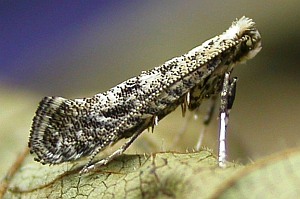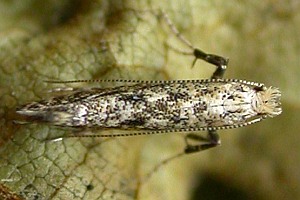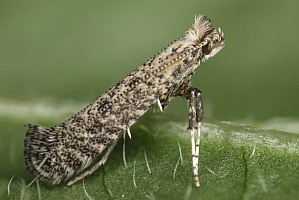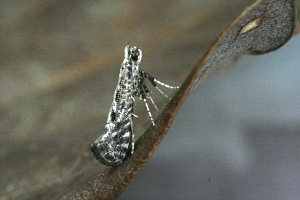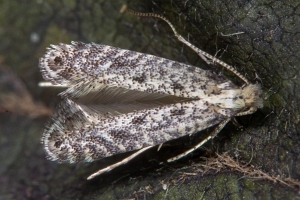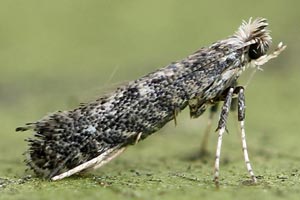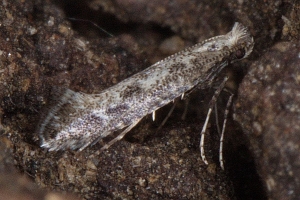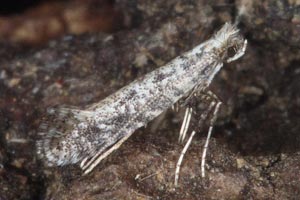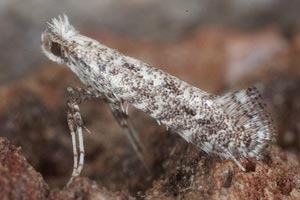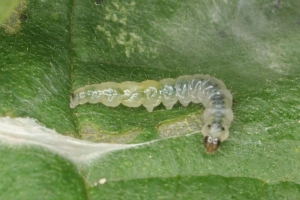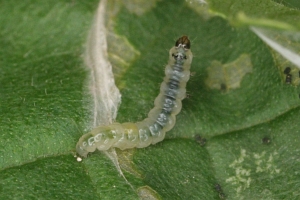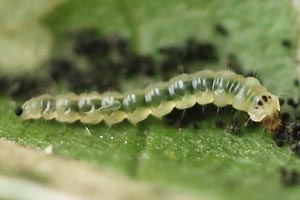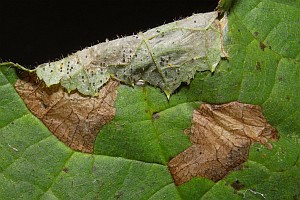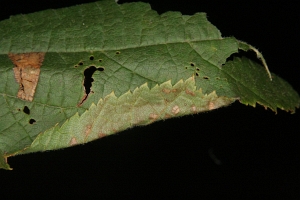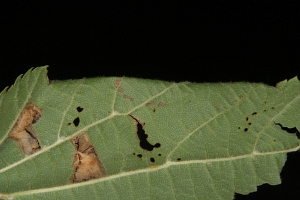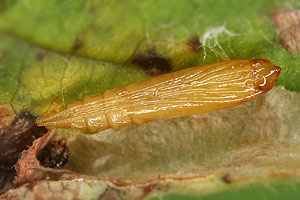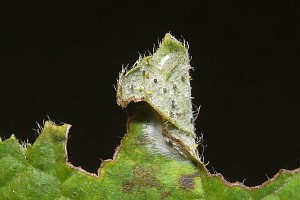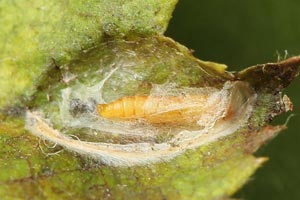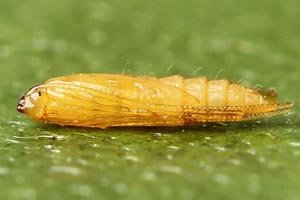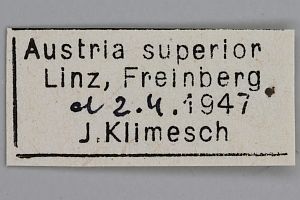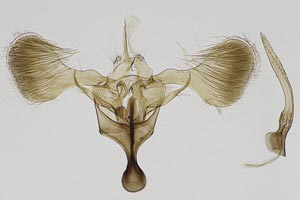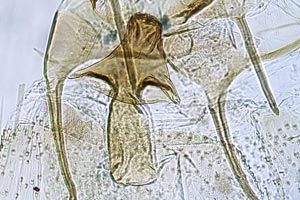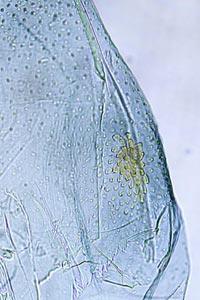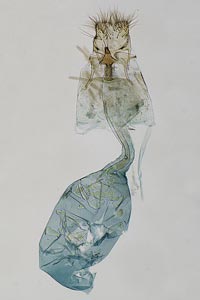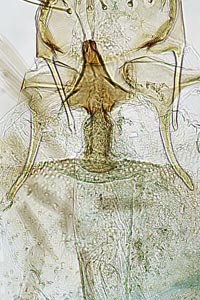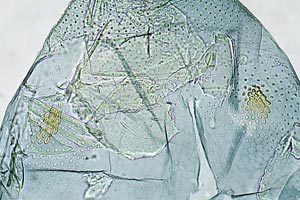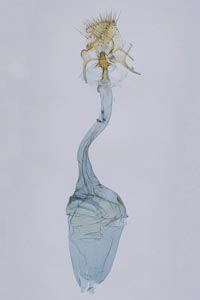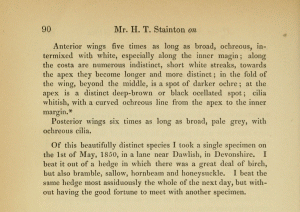

 +31Kontinente:EU
+31Kontinente:EU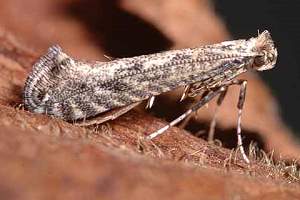


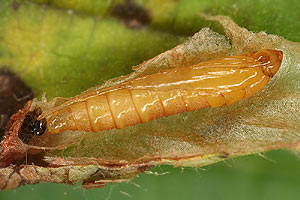
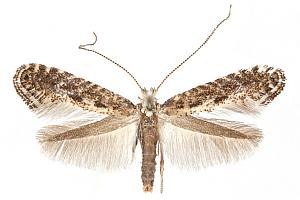
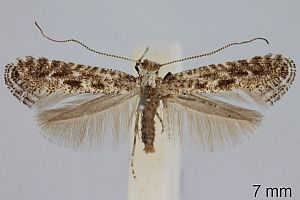
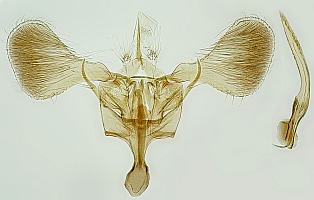
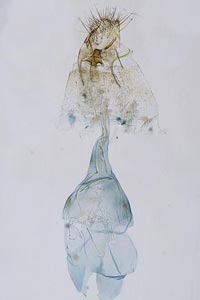
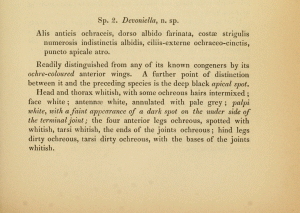
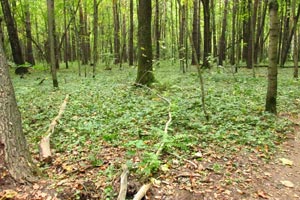
1. Lebendfotos
1.1. Falter
1.2. Raupe
1.3. Fraßspuren und Befallsbild
1.4. Puppe
2. Diagnose
2.1. Weibchen
2.2. Geschlecht nicht bestimmt
2.3. Genitalien
2.3.1. Männchen
2.3.2. Weibchen
2.4. Erstbeschreibung
3. Biologie
3.1. Habitat
3.2. Nahrung der Raupe
- [Betulaceae:] Corylus avellana (Gemeine Hasel)
- [Betulaceae:] Corylus colurna (Baum-Hasel)
- [Betulaceae:] Corylus maxima (Lambertshasel)
- [Rosaceae:] Cotoneaster sp. (Zwergmispel)
Die Raupe wird in aller Regel an Haseln (Gattung Corylus, Betulaceae) gefunden. Es gibt aber zumindest eine plausible Angabe zu Zwergmispeln (Cotoneaster, ein Sprung, den es auch bei anderen Gracillariidae gibt).
(Autor: Erwin Rennwald)
4. Weitere Informationen
4.1. Andere Kombinationen
- Ornix devoniella Stainton, 1850 [Originalkombination]
4.2. Synonyme
- Parornix avellanella (Stainton, 1854)
- Parornix cotoneastri (Caradja, 1920)
4.3. Taxonomie
Lopez-Vaamonde et al. (2021, supplementary material) erläutern in ihrer Checklist zu Parornix avellanella (Stainton, 1854): "A junior subjective synonym of Parornix devoniella (Stainton, 1850) (see: Meyrick 1927). Kuznetsov and Baryshnikova (2003) treated Parornix avellanella as the valid name for the Corylus-feeder; furthermore they synonymized P. betulae (Stainton, 1854), the Betula-feeder, with Parornix devoniella, the Corylus-feeder, following the note by Pierce and Metcalfe (1935) who wrote that the type of P. devoniella is P. betulae. Here we prefer to keep P. avellanella as a junior synonym of P. devoniella and we list P. devoniella and P. betulae as the valid names in the verified checklist until more research is done on the identity of the name devoniella."
4.4. Faunistik
Die Art wurde aus England bescherieben, galt aber bald als in Europa weit verbreitet. Laštůvka & Laštůvka (2014: 635) melden sie erstmals für Spanien und kommentieren: "ES: Gerona, Espinelves, 1 ♂, 27-VI-2012; León, Páramo de Sil, 1 ♂, 1 ♀, 19-VI-2014. Widespread in Palaearctic region, with trophic relation to Corylus avellana (DE PRINS & DE PRINS, 2005, 2014). Known from some provinces in Portugal: Estremadura (CORLEY et al., 2006), Douro Litoral and Trás-os-Montes (CORLEY et al., 2009) and Beira Baixa (Laštůvka & Laštůvka, 2009). New species for Spain (Figs. 14-16)."
4.5. Literatur
- Laštůvka, A. & Z. Laštůvka (2014): New records of mining moths from the Iberian Peninsula from 2014 (Insecta: Lepidoptera). — SHILAP Revista de Lepidopterología, 42 (168): 633-647. [PDF auf redalyc.org]
- Lopez-Vaamonde, C., Kirichenko, N., Cama, A., Doorenweerd, C., Godfray, H.C.J., Guiguet, A., Gomboc, S., Huemer, P., Landry, J.-F., Laštůvka, A., Laštůvka, Z., Lee, K.M., Lees, D.C., Mutanen, M., van Nieukerken, E.J., Segerer, A.H., Triberti, P., Wieser, C. & R. Rougerie (2021): Evaluating DNA Barcoding for Species Identification and Discovery in European Gracillariid Moths. — Frontiers in Ecology and Evolution, 9 (Artikel 626752): 1-16. [zum open-access-Artikel auf frontiersin.org]
- SCHÜTZE (1931): 59
- Erstbeschreibung: Stainton, H. T. (1850): On Ornix Meleagripennella and its Allies; a Group of Lepidoptera, Family Tineidae. — The Transactions of the Entomological Society of London. 2 (1): 86-96.
- Stainton, H. T. (1864): The natural history of the Tineina 8: I-IX, 1-315, Gracilaria pl. I-V, Ornix pl. I-III. London (John van Voorst) – Paris (Deyrolle) – Berlin (E. S. Mittler und Sohn). — Digitalisat auf archive.org: [280-291], [Ornix pl. III fig. 1] (unter dem Namen Ornix avellanella).
































